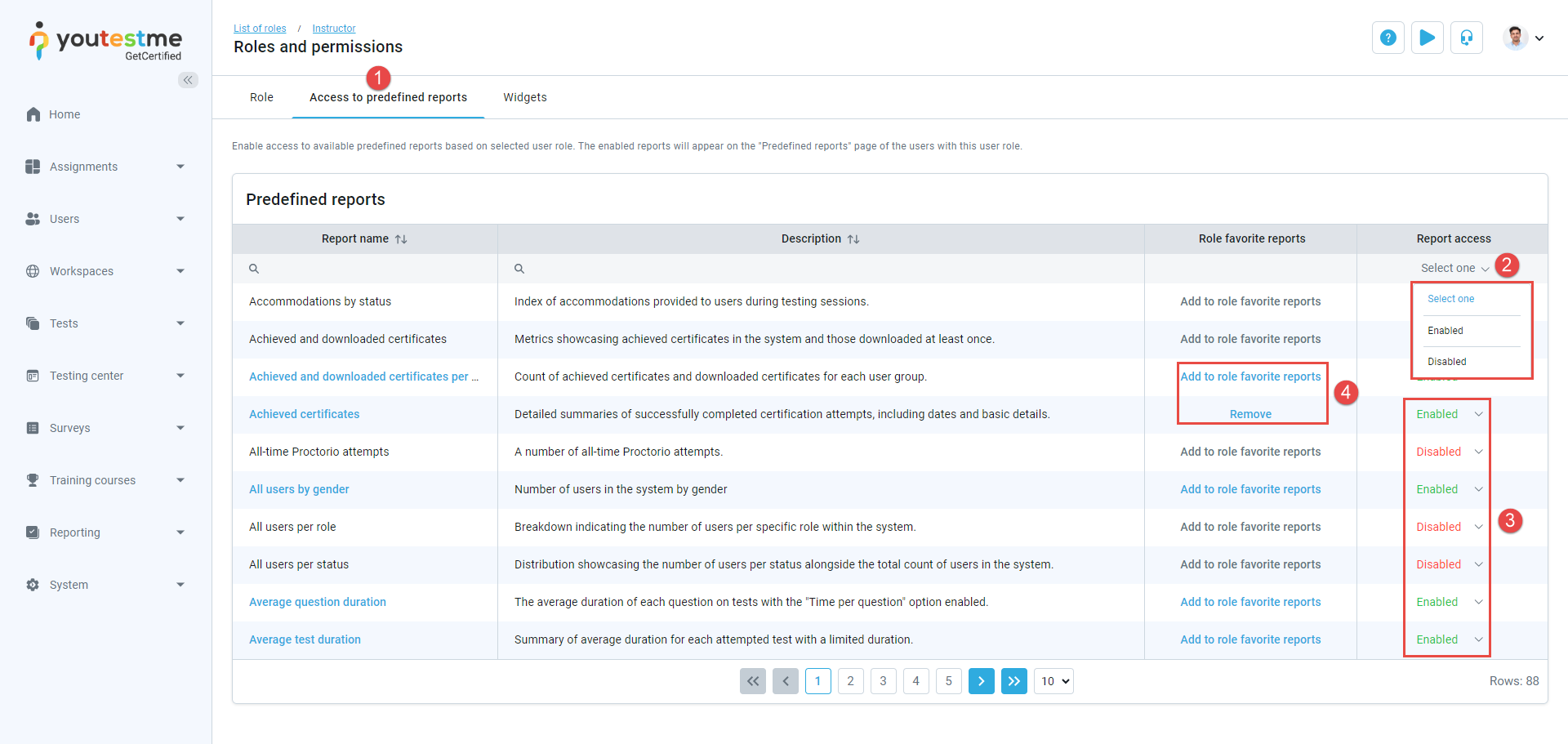User manual
-
Introduction
-
List of permissions
Role name Description Login Access the application using unique credentials: a username/email and a password. When Single Sign-On (SSO) integration is used for logging into the application, it is recommended to disable this permission. This ensures that users are required to log in using the SSO integration. Access the User profiles page Access to the User profiles page. With additional permissions, users can manage other users and user settings. Create new users Create new users one by one or load them from an Excel template. Setting a role other than Student requires the Grant roles to users permission, and setting a status other than Active requires the Manage user statuses permission. View a list of all users View the list of all users on the User profiles page and in all user lists throughout the application. View users with the status Inactive Filter users with Inactive status in user lists (such as user profile list, list of candidates, etc.). View any user's personal information View any user profile and its basic information across all tables in the application. Change own personal information Update own profile information, including personal details, account information (excluding username and role), and profile attachments. Change other user's personal information Update profile information for other users, including personal details, account information (excluding username and role), and profile attachments. Change own password Change own password on their profile. Change other user's password and 2FA settings Change other users' passwords and disable Two-factor authentication (2FA) on their profiles. Manage user roles Access to the Roles and permissions page. Create, edit, or delete user roles. Change own role Change their own role on their profile. Grant roles to users Change other user's roles on their profile pages. Manage user statuses Modify users' statuses (activate, lock, suspend, set to inactive) or permanently delete users. Manage registration requests Approve or decline registration requests. When a user submits a self-registration request, notifications are sent to all users with this permission. Enable viewing of achieved certificates View a list of certificates the user has achieved through the My achieved certificates tab on their profile and in their personal reports for tests. Access the My groups tab on the user profile The overview of the list of user groups the user belongs to from the My groups tab on their profile. Access the My pools tab on the user profile The overview of the list of question pools (that the user can use or manage) from the My pools tab on their profile. Access the My activity log tab on the user profile Access a detailed log of the user's in-app activities through the My activity log tab on their profile. Access the My subscribers tab on the user profile Access to the list of subscribers of the user from the My subscribers tab on their profile. Manage subscriptions Manage subscription lists on the Reporting/Subscribers page or on the user's own or other users' profiles. This includes the ability to create, edit, or delete subscriptions. Manage own registration links Create new registration links and edit or delete existing ones the user has created. Manage all registration links Manage all registration links in the system: create new ones, modify, and delete existing links, including those created by other users. Allow data export Export any table content in PDF, Excel, or CSV format. Access the User groups page On the User groups page, allow the user to access the list of user groups of which they are a member or manager. View all user groups On the User groups page, allow users to access the list of all user groups in the system. Create new sub-groups Create new sub-groups within parent user groups user manages and automatically become managers of those sub-groups. Delete sub-groups the user manages Delete sub-groups the user manages. Create and delete top-level user groups Create top-level user groups and automatically become their managers. Additionally, allow users to delete top-level user groups they manage. Manage any user group Manage any user group in the system, including changing their settings, managing members and managers, and deleting user groups. Access the Question pools page On the Question pools page, allow users to access the list of question pools that they can use or manage. Create new question pools Create new question pools and automatically become their managers. Manage any question pool Manage any question pool in the system, including changing their settings, managing questions and question pool users, and deleting question pools. Access to the Manage tests, Manage surveys, Grading scales, Training courses, and Personal report pages Access to the Manage tests, Manage surveys, Grading scales, Training courses, and Personal report pages. Create new tests, surveys, or training courses Create new tests, surveys, or training courses, including the possibility to import new ones. Users can also copy existing tests and surveys to create new ones based on them. Publish tests, surveys, or training courses Change the status of tests, surveys, or training courses to published and make them available to candidates. View questions Access questions and details in tests and surveys managed by the user. Access and grade reports Access and grade candidates' reports for tests the user manages or to which they've been assigned as a grader. Grade any report View and grade all taken tests and surveys. Assign user group members to testing sessions Assign members of user groups the user manages to testing sessions for tests or surveys, and track the results of those user group members. Fully manage own tests, surveys, or training courses In tests, surveys, and training courses where users have been assigned as managers, allow them to edit settings, assign other managers, add publicly available grading scales, and access detailed reports. Additionally, provide options to delete and export them. Manage any test, survey, or training course Fully manage all tests, surveys, and training courses: edit their settings, manage candidates and managers, add all grading scales from the add any grading scale available in the system, delete, and export them. Create new certificates Create new certificates and use them in test creation. Upon creating certificates, users will automatically become their managers. Create a test template Create test templates and save configurations for generating future tests. Set a test template to be public Create publicly available test templates that other users can also use for future test generation. View all special accommodations On the Candidates page, view the list of all special accommodations and their details. Request special accommodation Request special accommodations for tests or surveys a user has booked or been assigned to. Respond to special accommodation requests Respond to special accommodation requests by approving or rejecting them. These users will receive a notification when a special accommodation request is created. Manage special accommodations Create, edit, respond, or remove special accommodations. Users with this permission will also receive a notification when a response on special accommodation is sent. Manage special requests Create and manage special requests sent to candidates. Users with this role will also receive notifications when a response is sent and when a special request is pending review. Access the Testing center dashboards Make the Testing center section visible in the main menu. Enable the desired permissions below to allow users to access additional pages within the module. Access and view own testing sessions Access to the Testing sessions page within the Testing center module. Users can view testing sessions managed/monitored by the user or scheduled for the tests that the user manages. Create a testing session Create and manage testing sessions for the tests the user manages. Even if the Testing center module is not used, this permission must be enabled to allow the creation of testing sessions. Assign any user to the user's testing sessions Assign any user from a list of all system users as a candidate in testing sessions the user is managing or testing sessions for a test/surveys where the user has been assigned to as a manager. To allow the assignment of any user from the system, this permission must be enabled, even if the Testing center module is not used. Without this permission, users can see and assign other users based on their other permissions. Manage any testing session Fully manage testing sessions, including editing session configurations, managing candidates, assigning proctors, managers and more. Users have complete control over all aspects of the testing sessions, and this level of management is only possible through the Testing center module. Access Testing locations page Access to the Testing locations page and view a list of all testing locations available in the system. Manage testing locations View and manage the Testing locations dashboard: Create new locations and edit or delete existing locations in the system. Access the Candidates page Access to the Candidates dashboard under the Testing center module. Users have the ability to manage special requests and special accommodations, as well as to view and monitor test/survey attempts and sessions they manage. Manage test authorizations Manage test authorizations by creating new ones, editing, or deactivating existing ones. Change attachment availability Change the availability of existing attachments to private or public. Attachments can be added to tests, surveys, training course steps, or questions, and candidates will view them during assignments. Public attachments are accessible to any test/question creator. If a user without the Manage any attachment permission sets someone else's attachment as private, it will no longer be visible to them. Edit public attachment Modify the name and description of any public attachment. Manage any attachment View, modify, and manage all attachments, including public and private ones created by other users. Access the Manage workspaces page Access to the Manage workspaces page. If the user is a member of a workspace, they will see that workspace on this page but cannot edit it without the Manage any workspace permission on their system role or the Manage workspace permission on their workspace role. Create new workspaces Create new workspaces and edit the ones the user has created. Manage any workspace Manage the Workspaces module, including accessing, creating, and managing workspace roles, as well as managing all workspaces in the system. Access the Categories page Access to the Categories page. Create new custom categories Create new custom categories and assign them to appropriate workspaces if needed. Manage any custom category Manage any custom category in the system by editing or deleting them. Manage system settings Access to the system settings module, including the Settings and customization, Integrations, and Maintenance pages. Access the REST API Authenticate to the REST API and make calls to the REST API endpoints. Show or hide candidate reports Show or hide candidate's test results on the "Personal report" page. Export candidate reports Export a test results from the "Personal report" page in available formats (PDF, Excel, score by question pools,...). Gain offline access, detailed result analysis, or share reports outside the system. -
Creating/editing role
You can create an unlimited number of custom roles. All roles (custom and predefined) except the administrator role are editable.
-
Role settings
To create a role:-
Enter the Role name.
-
The role code is generated automatically by the system upon role creation and cannot be edited. The role code is a key identifier when importing users via an Excel template.
-
Enter the External ID, a unique identifier for integration with external systems. Otherwise, leave it blank.
-
Enter the Role description, which is displayed on the home page in the welcome message section.
-
Choose the landing page upon login.
-
Generate and share a User registration link. Users who receive it will use the link to create an account with this role.
-
If a user has permission to create a new user (12. Create new users - enabled) but does not have permission to assign roles (3. Grant roles to users - disabled), they can choose any role labeled as Grantable role when creating a new user.
-
Require two-factor authentication on login. Users assigned to this role must complete a two-factor authentication process during login. If two-factor authentication has not been set up, users will be prompted to configure it before proceeding. Please note that this option is applicable only during standard login with credentials. For more information on how to configure two-factor authentication, please refer to this article.
-
Public role is visible and accessible in all workspaces.
-
Choose permissions to define the actions and viewing capabilities for this role. For details on each permission, consult the List of permissions chapter.
-
Click the Create/Update button.
-
-
Widgets
Widgets provide quick access to frequently used application functions directly from the home page.
The configuration of widgets on the homepage can be tailored to your preferences:
-
Use the search bar to find a specific widget from the Available widgets.
-
Drag and drop the widget into the blank space on the right side.
-
To remove a widget, click on the minus button in the top-left corner of the widget.
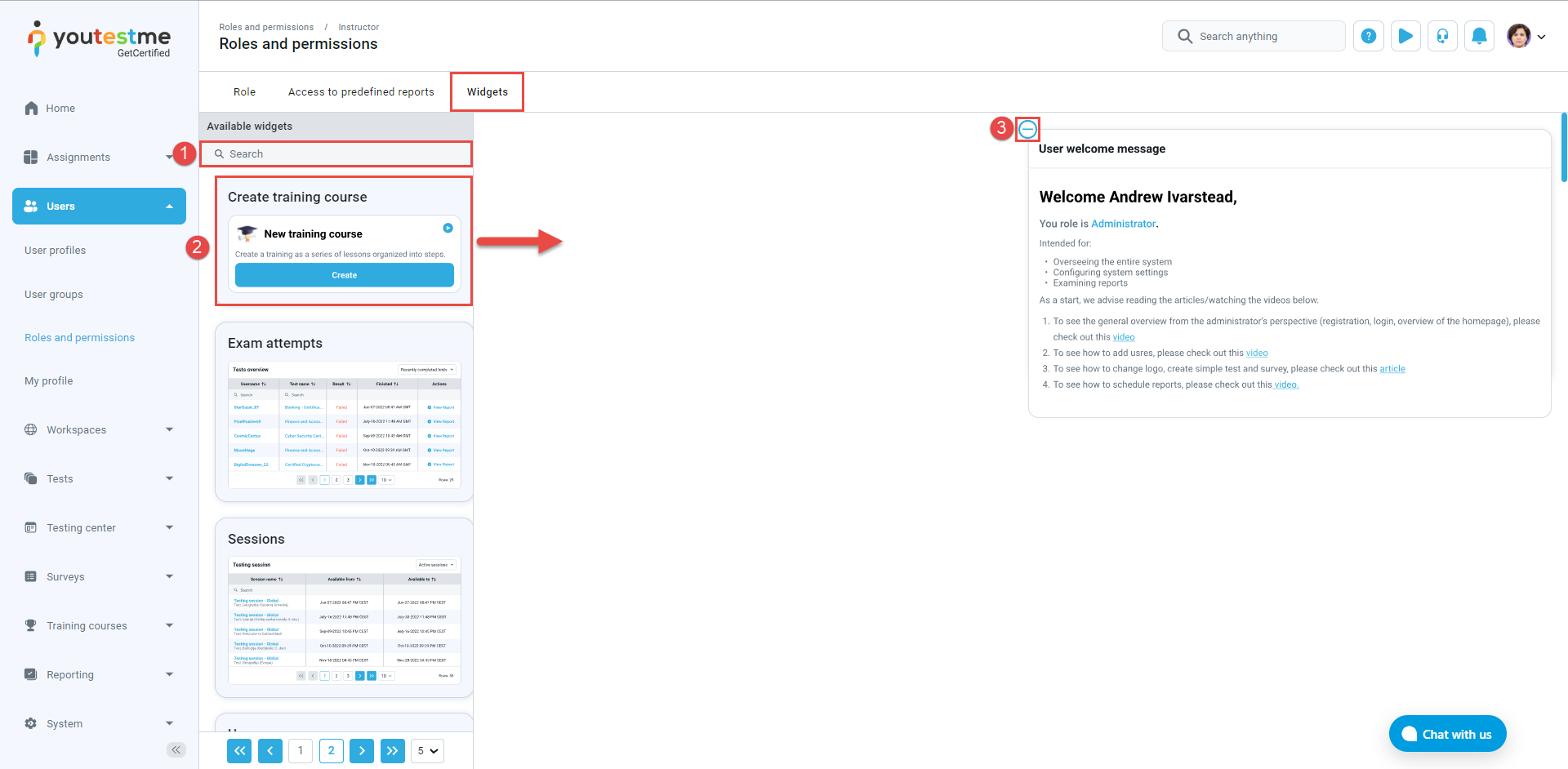
-
Types of widgets
Role description - Description of your role within the system. It can be modified in the Roles and permissions section under the Role description field.
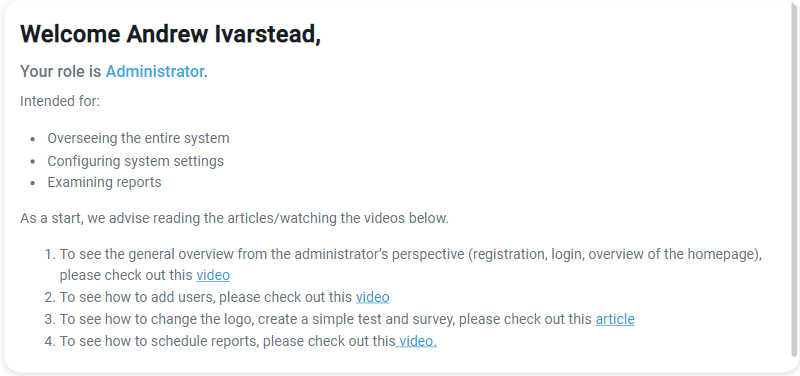
New user group - Shortcut widget for creating a new user group.
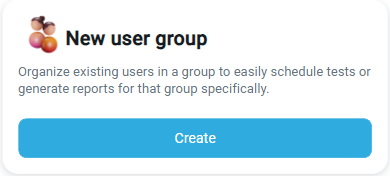
New test - Shortcut widget for creating a new test.
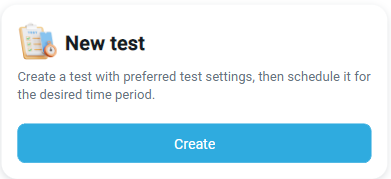
Testing sessions - A list of upcoming, active, and expired testing sessions.
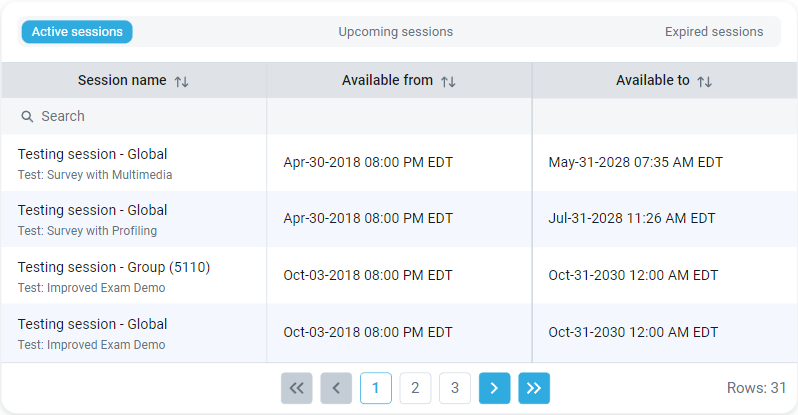
Recently created tests - A list of tests, sorted from most recently created to oldest. It includes associated statistics such as the number of passed, failed, and not graded test attempts. Additionally, you can manage testing sessions and access results.
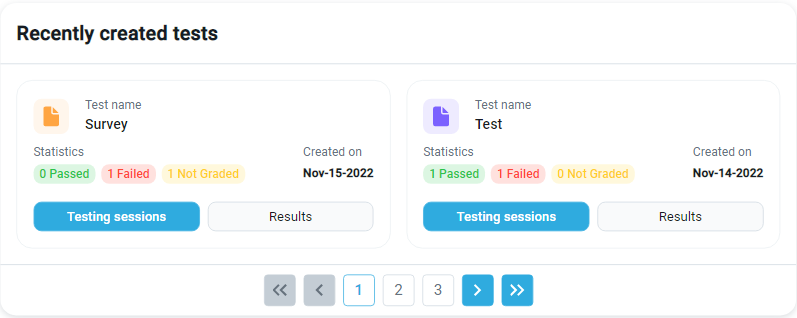
Quickly create test from template - A list of public test templates that can be utilized for creating new tests. For detailed instructions on creating test templates, refer to this link.
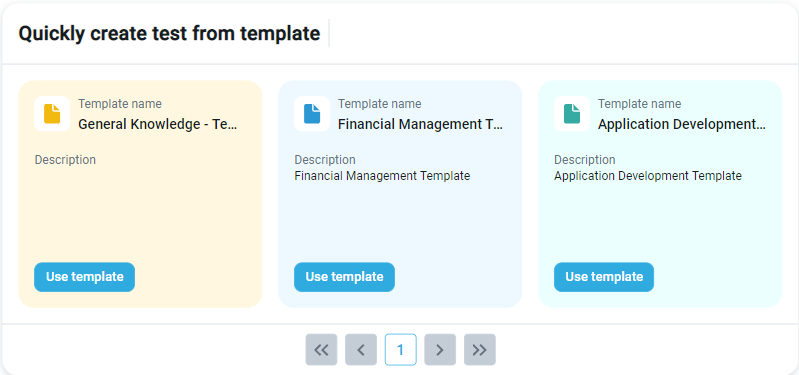
New training course - Shortcut widget for creating a new training course.
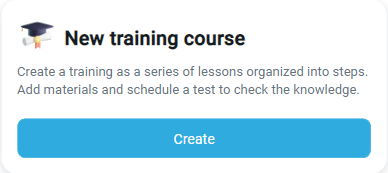
Recent payments from users - A list of user purchases with payment details, organized from most recent to oldest transactions.
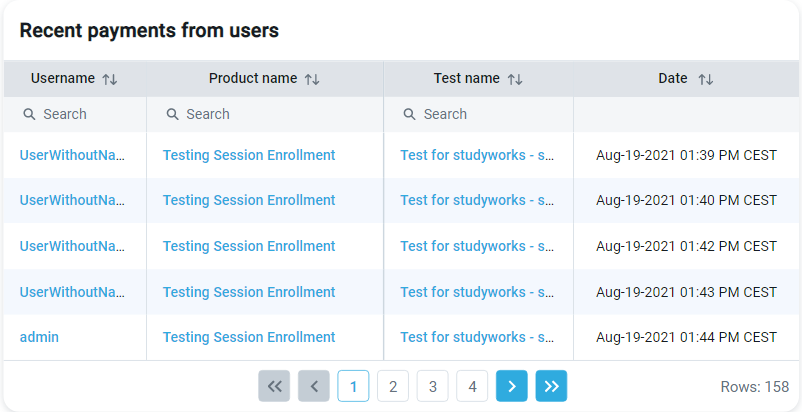
Proctoring minutes - The number of purchased and remaining proctoring minutes for proctored tests.

Users per role - The total number of users in the application grouped by their security role, along with the number of users created since the beginning of the current month.

My user groups - A list of groups assigned to a user for managing, sorted from oldest to newest, with basic group information.

List of system settings - Main settings that allow you to easily customize the application. For more information, refer to the Settings and customization help page.
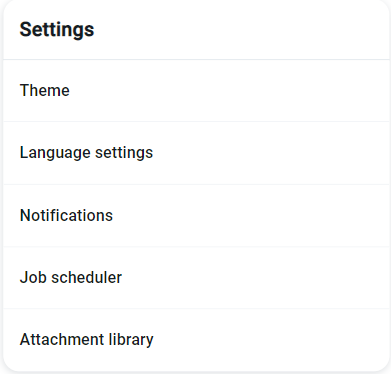
New user - Shortcut widget for creating a new user.
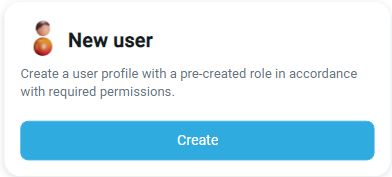
New surveys - Shortcut widget for creating a new survey.

Favorite reports - A list of reports the user has marked as favorite.
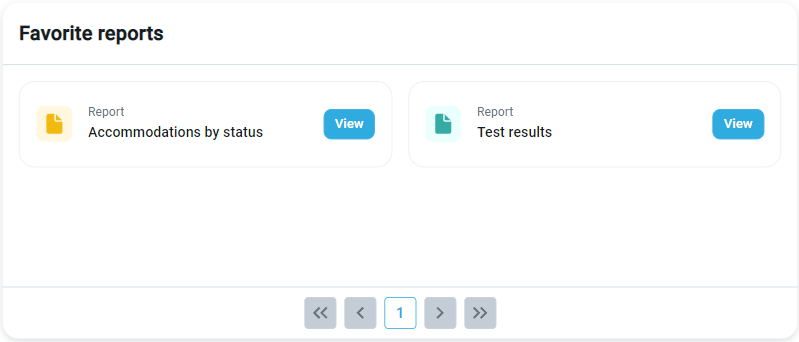
Exam attempts - A summary of test attempts with details.
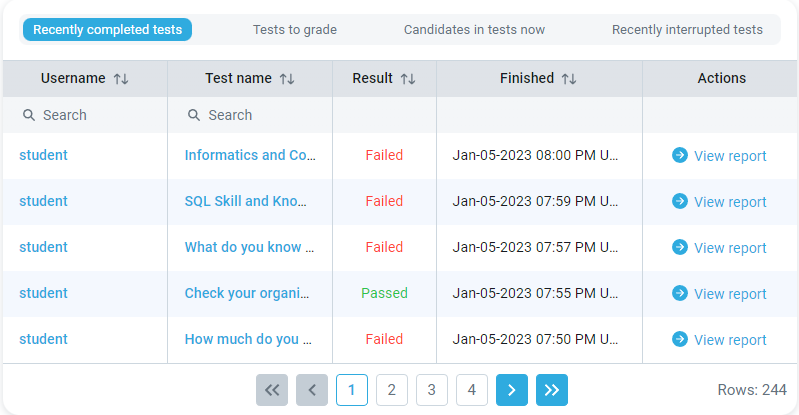
Recent activity - A list of the user's latest actions.
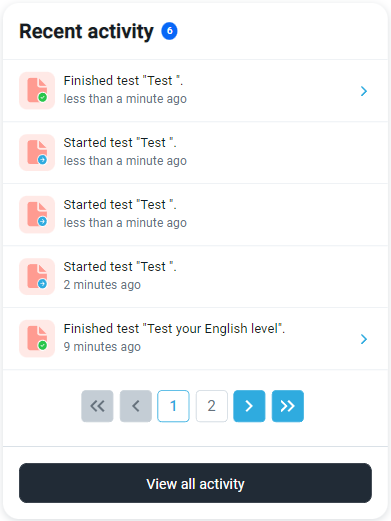
Attempted tests - The total and monthly number of attempted tests.

Note: For more information on personalizing the home page, please refer to this article.
-
Note: Editing an existing system role mirrors creating a new one.
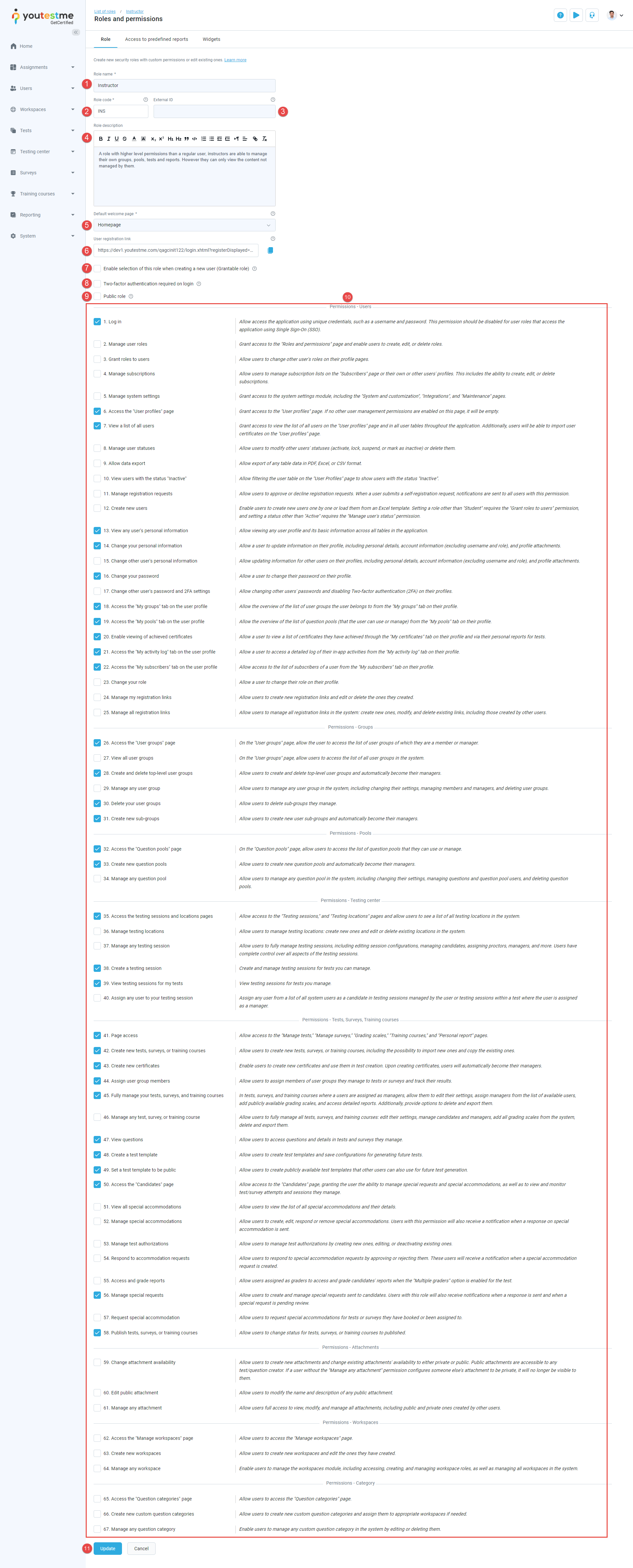
-
Roles and permissions
Permission defines what a user can see or the actions they can take within an application. A User role is a predefined or custom set of permissions.
Predefined roles in the system:
| Role | Description |
|---|---|
| Administrator | Manages all system modules; cannot be deleted and its permissions are not editable. |
| Instructor | Manages groups, pools, tests, and reports they've created or been assigned as a manager. |
| Proctor | Monitors candidates during the test-taking process in real time or through recorded videos. |
| Student | Takes tests, surveys, and training courses; Views and downloads reports and certificates for completed activities. |
| Guest | Has temporary access to take tests and surveys without registration; no user data is stored or actions recorded. This role cannot be deleted or modified. |
